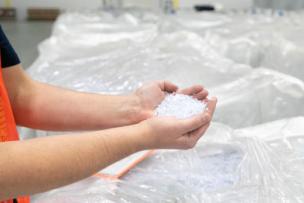When temperatures begin to drop outside, it’s time to prepare your shop floor for winter and to remind your workers of best practices to keep them safe. Here are five tips that might not immediately come to mind.
The increased use of machinery running on high-voltage current magnifies the potential for an arc flash incident that could harm or kill workers. Here are five PPE tips to reduce your workers’ risk during an arc flash incident.
The primary hazard of trenching and excavation is employee injury from collapse.
What’s it like for the EHS chief at a startup venture on a mission to achieve zero plastic waste on the planet through a revolutionary approach to producing food-grade packaging from recycled PET? Find out in this interview with Venessa Cardenas, environmental health and safety manager at rPlanet Earth.
Fall prevention and dropped object prevention solutions prevent injuries, save lives and enhance your overall workplace safety.
How can you encourage employee hydration when they say they aren’t thirsty? There’s one great way to get around this issue: educate your workers.
Maintaining the concentration of electrolytes is crucial for proper fluid balance, nerve function, muscle contraction, and other physiological processes in the body. This white paper from Sqwincher examines the role of major electrolytes in the body, the importance of maintaining the right concentrations, and the daily requirements.
Are you a safety cop or a safety friend? Learn how to transform your safety culture from a human-error focus to actual cultural change with safety by design.
The top three leading causes of work-related injuries – overexertion and bodily reaction, contact with objects and equipment, and slips, trips and falls – account for more than 85% of all nonfatal injuries involving days away from work.
The need for effective anti-fatigue solutions in the workplace is becoming more prominent as workers over the age of 55 are expected to make up nearly one quarter of the labor force by 2026. Aging workers are almost 20% more prone to musculoskeletal disorders, which comprise a third of all injury incidents.




